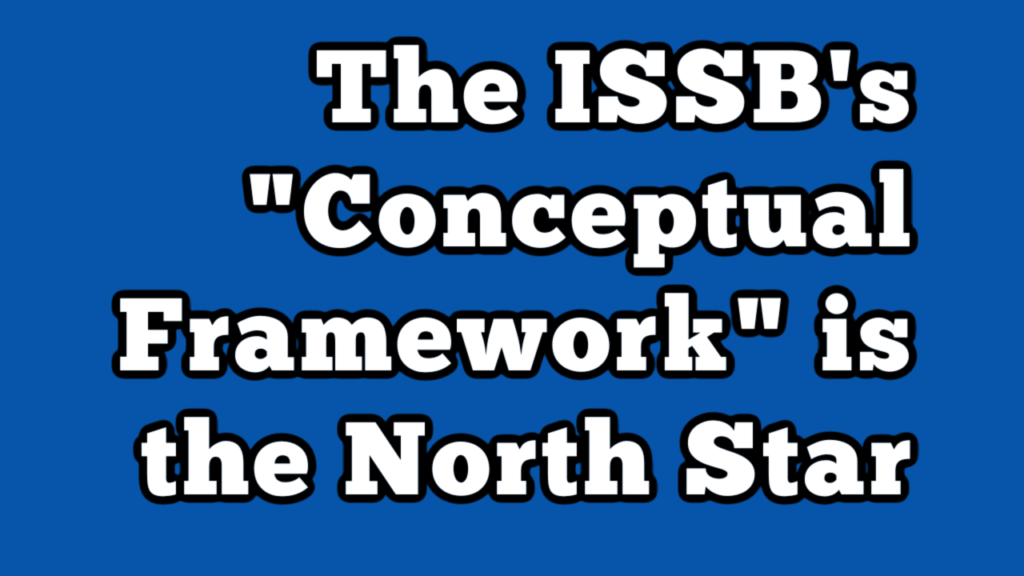The ISSB’s “Conceptual Framework” is the North Star

Here’s a blog from Jean Rogers – reflecting solely her own personal views – about the promise and perils of achieving a global standard for disclosure of sustainability impacts. Here’s an excerpt:
In standards setting, form really does follow function. In 2011, when SASB was just beginning to develop standards for the US capital markets, we applied design thinking to understand the issuers and investors and the complex set of securities laws that govern public disclosure for SEC reporting companies. The design criteria were set out in SASB’s Conceptual Framework. The principles and assumptions guiding development of the standards provided the essential boundaries within which to innovate, and a critical touchpoint to guide SASB through inevitable differences of opinion and pressure for scope creep.
The ISSB must resist the temptation to “jumpstart” its process by hastily adopting outdated standards, but rather, must begin by developing its own Conceptual Framework, as its constitution requires. The Conceptual Framework for ISSB must thoughtfully consider what it means to bring transparency, accountability and efficiency to financial markets around the world in the context of sustainability issues and their interpretation by users.
The Conceptual Framework will establish the ground rules for threshold concepts such as the purpose of the standards, the definition of sustainability, the materiality orientation, methods of measurement, the importance of context in interpreting data, the differences in priorities and concerns of countries that use IFRS (as well as those that do not, namely the United States), and ultimately how success of the standards- setting effort will be evaluated. Rules of procedure and representation of global stakeholders in the process must also be outlined in detail.
The Conceptual Framework is the North Star that defines the agenda and decision-making activities of the new board. Without it, ISSB will be adrift in a sea of hundreds of potential (and often conflicting) criticisms raised by thousands of stakeholders, with no way to prioritize. There is a danger of capture by self-interested parties in the ESG industrial complex who benefit from more and more standards, not better and better performance on the things that matter. A Conceptual Framework will provide guardrails and must precede standards setting activities in order to maximize the potential for success. Take it from Bob.
